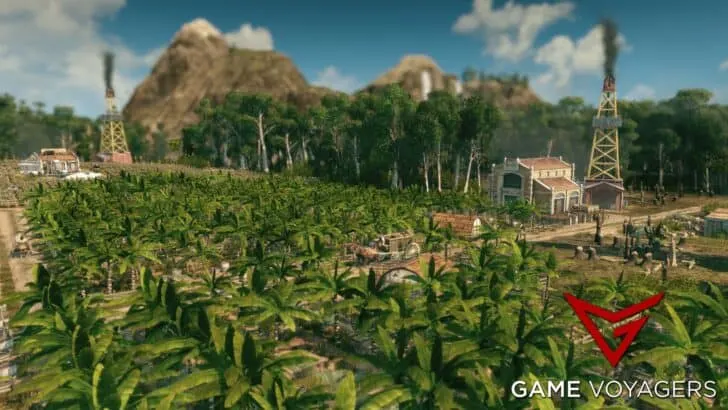Production is one system that you should be quite familiar with before you start a world in Anno 1800. What goes into Production? What things do you need to be aware of before setting up an industry? We will cover everything in this guide to Production in Anno 1800.
For Production in Anno 1800, you must first set up a population of farmers/workers to create a workforce. Try to cater to their basic needs to keep them happy only to continue to work for you. Next, start creating Production chains that are close by and the Production times are synced up with the industry they are a part of. Utilize the Warehouse to store the resources you produce.
Eventually, with enough right steps, you will start to profit from this venture. We will go into much more detail below so please keep reading for more clarity on this complex subject.
Population/Workforce and Needs in Anno 1800
Before you can start working on a resource or Production, you need the population to feed the workforce. For this, you need to build some houses for the populace to occupy.
Marketplace
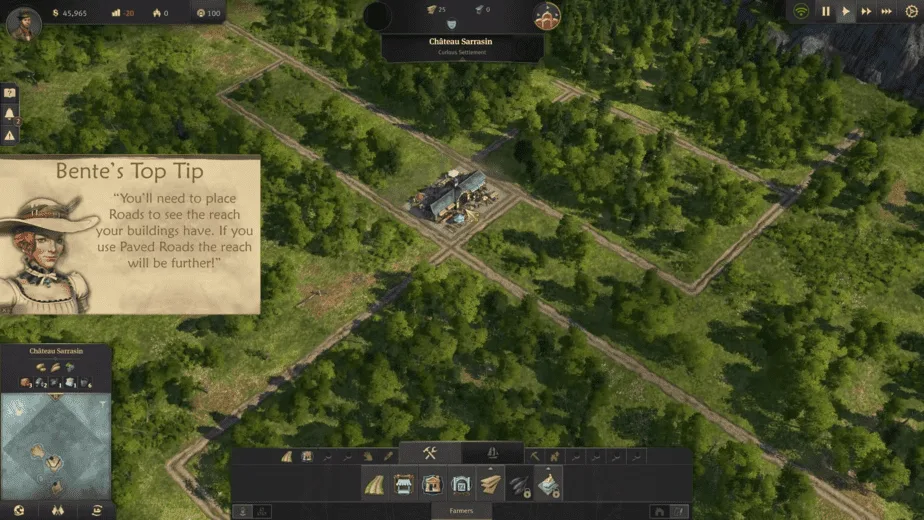
But before houses, the first thing that is essential to your city and everything else related to it is a Marketplace.
A Marketplace is a kind of central hub of your small village. All markets need a road connection back to the harbor. Houses need a road connection to the Marketplace to begin to grow as that’s where citizens get their goods.
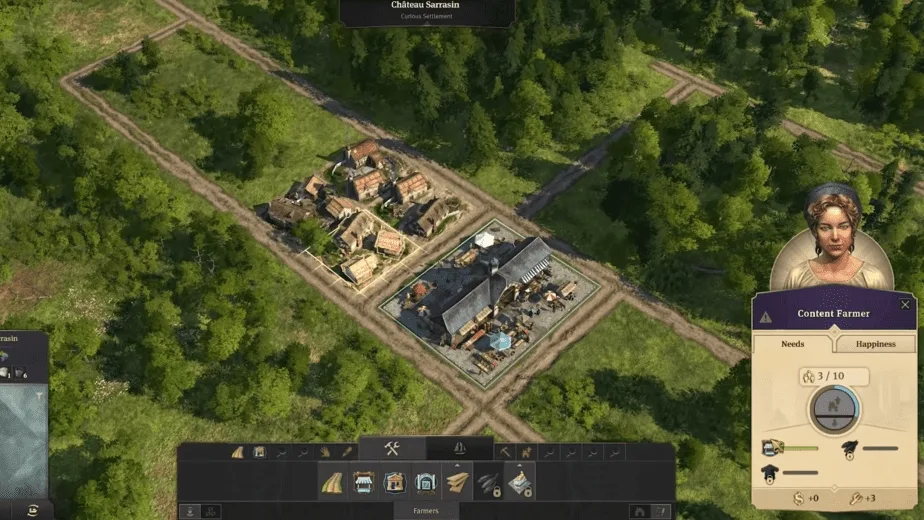
A house that’s within 35 tiles of a market will have its market demand fully met so you should build a market with at least 35 tiles of space around it from all sides. Don’t put it next to a coast or next to a cliff as you’ll be wasting valuable house-building space.
A handy tip when building anything is to use the Blueprint Mode. Toggling that on allows you to place things/buildings down and see their reach without committing to the actual cost. When you’re happy with the placement then just upgrade from a blueprint into a building.
Houses
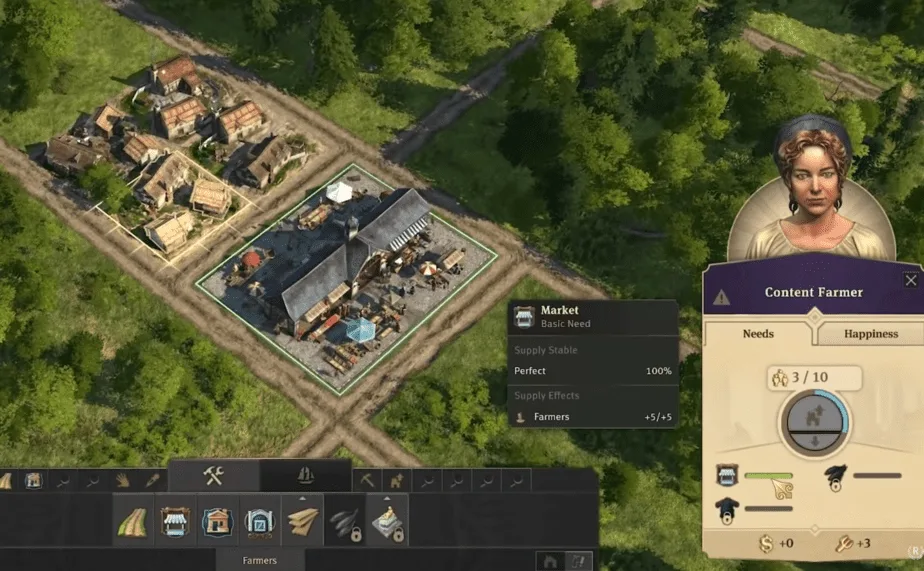
Ideally, you’ll want to place your market and put a few houses around it. When these houses are all built you’ll notice, when clicking on a farmer’s house, how strong that supply is. If you built them inside those 35 tiles, you’ll be 100% supplied to the market and your farmers will start filling the house.
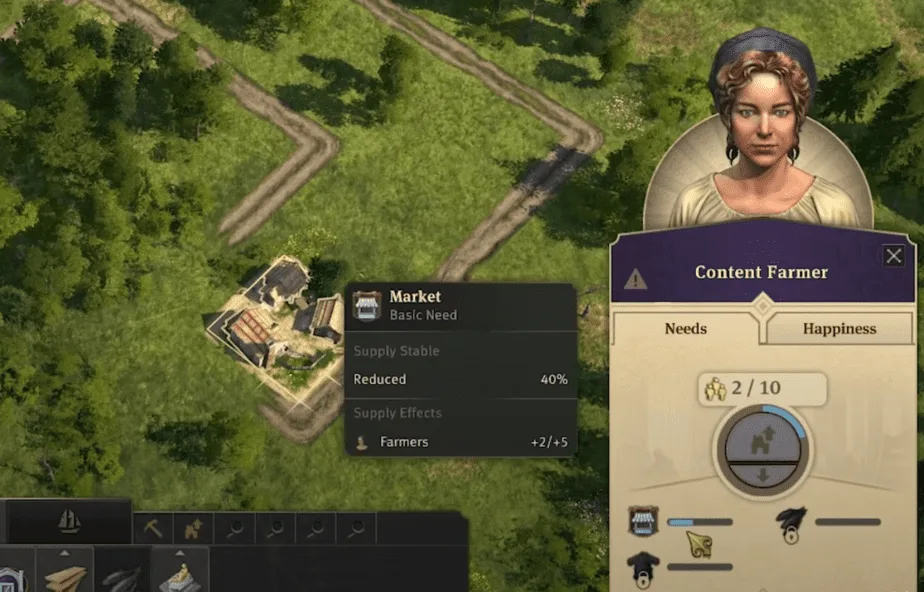
If you build the houses further away then they will only partially meet that market demand and will not grow properly. Keep it within the marketplace 35 tiles radius.
Needs, Happiness, and Upgrading Residents
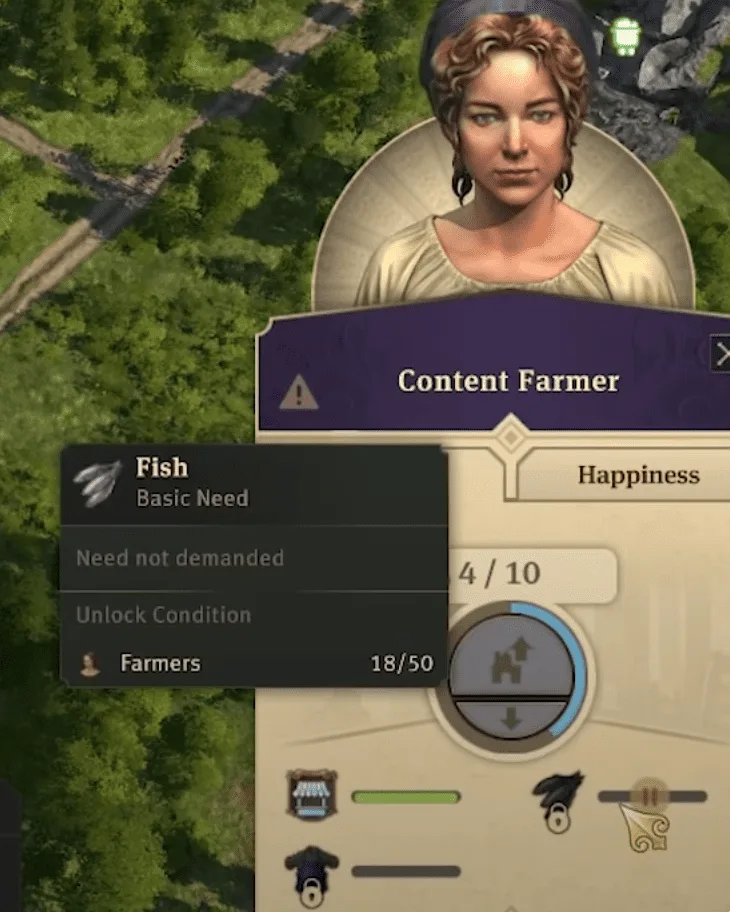
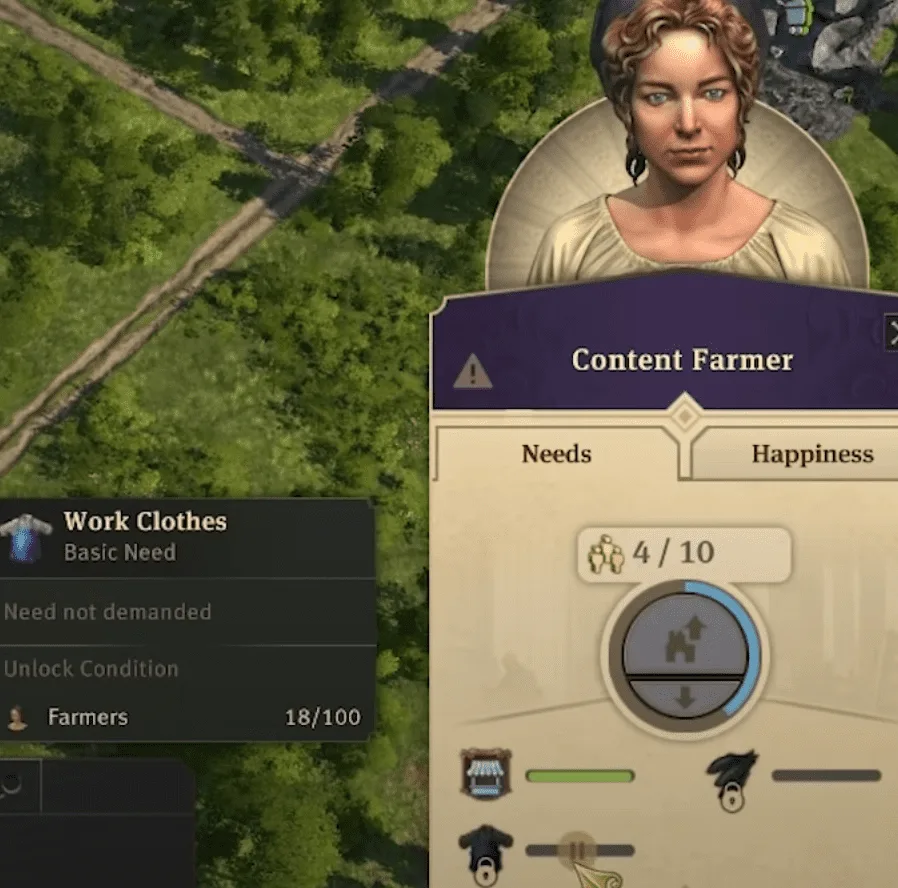
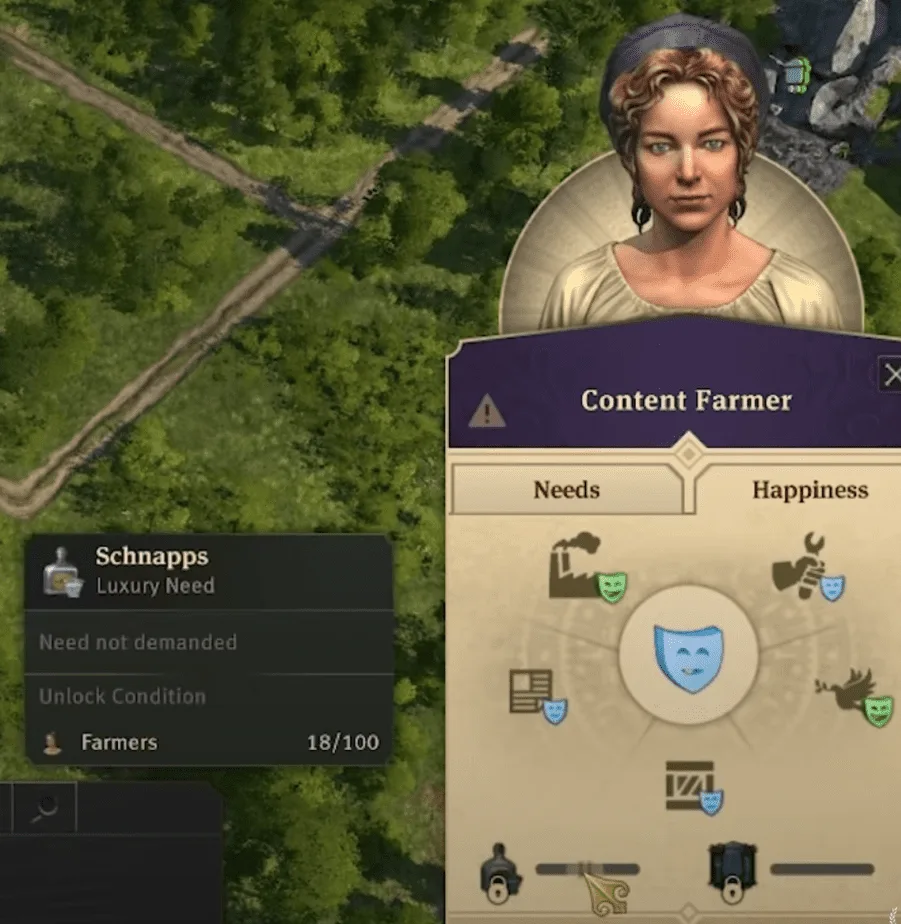
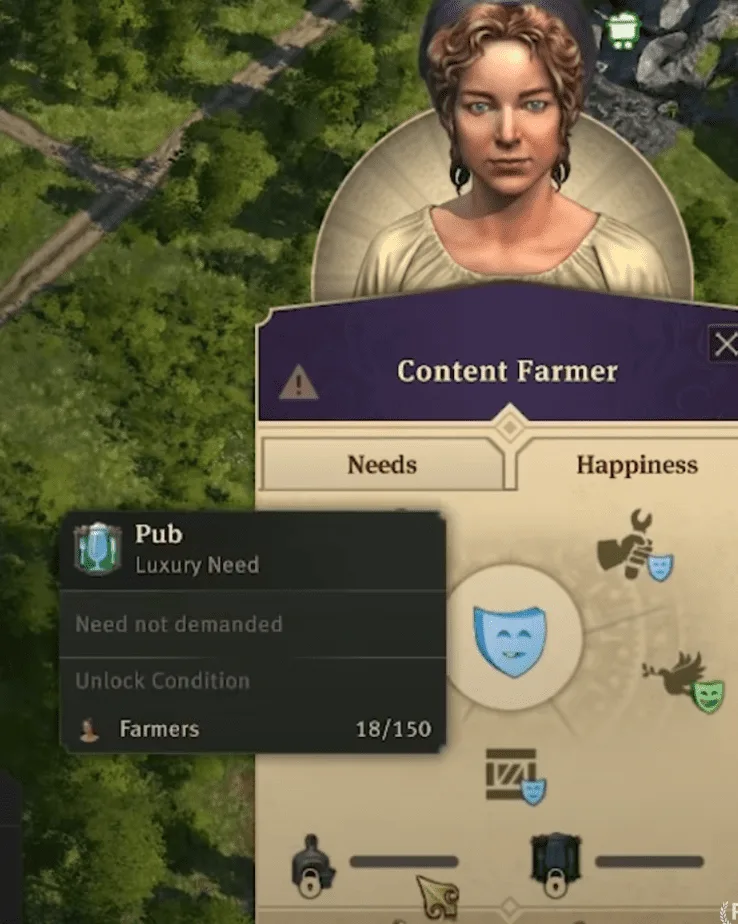
All houses and their residents have Needs and Happiness. Needs are fulfilled by basic goods and Happiness is fulfilled by luxury goods. The more needs that are fulfilled the higher the population will grow in that residence. The more happiness that’s fulfilled the more income you make off those people in the residence.
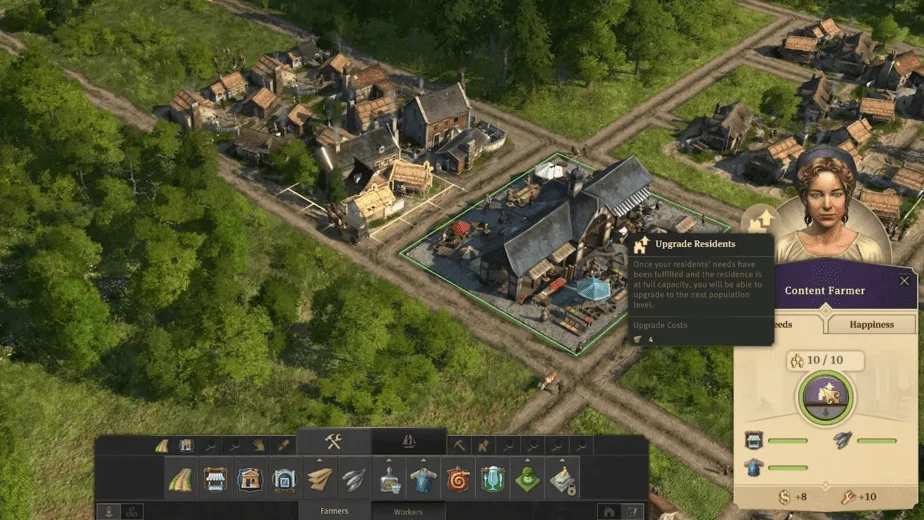
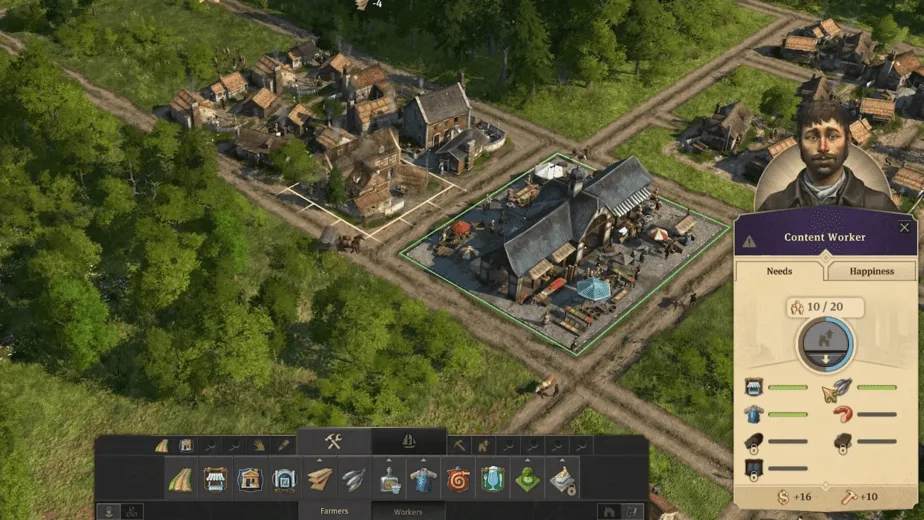
For a house to advance to the next level of population class, it needs to have its basic needs met and has grown to a full population already in that residence/house, only then can you advance to the next tier.
For the initial farmer population, they just need a market close by, fish, and clothing. If you satisfy all of that then your population will hit ten out of ten in that house and they can upgrade to workers.
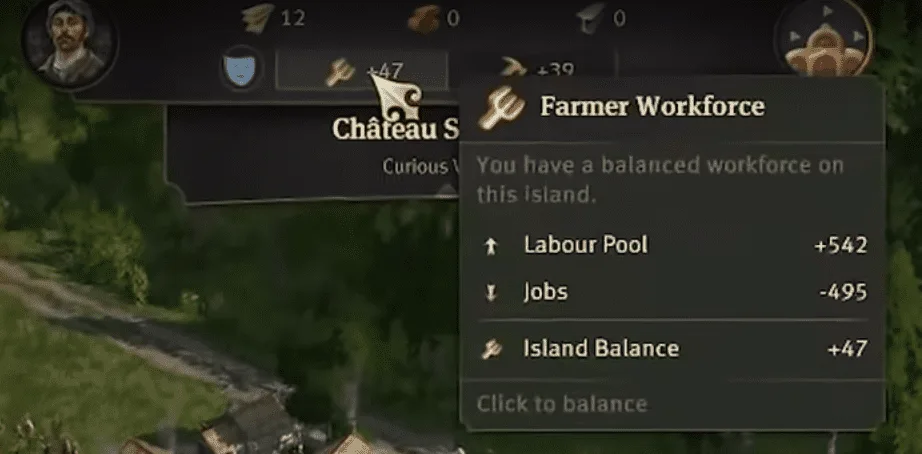
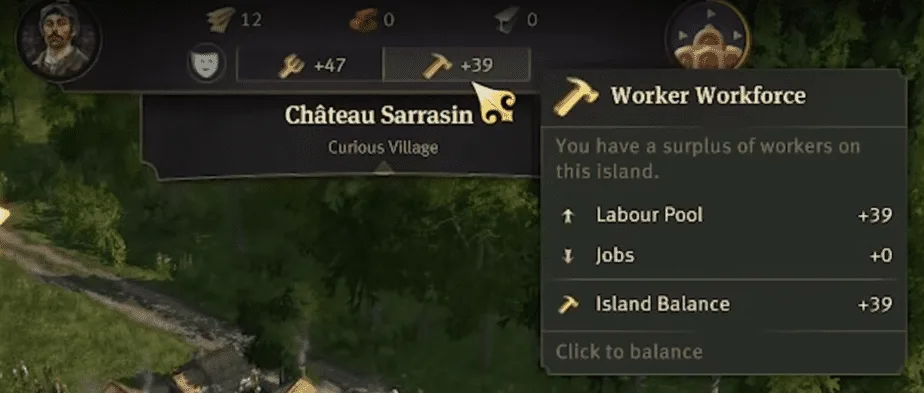
Be careful when upgrading, as doing it means you are removing ten farmers and creating ten workers. Also, each upgraded residence will double in size so it will grow to 20 workers when you meet all of their needs.
This is going to put more pressure on what you’re farmer population is already working on. As more people consume more stuff even within one residence. And if you leave your people unhappy for too long they may riot.
Once you have understood the population and workforce mechanics, it is time to look into Production.
How To Attract Migrants in Dwarf Fortress?
Production and Production Chains
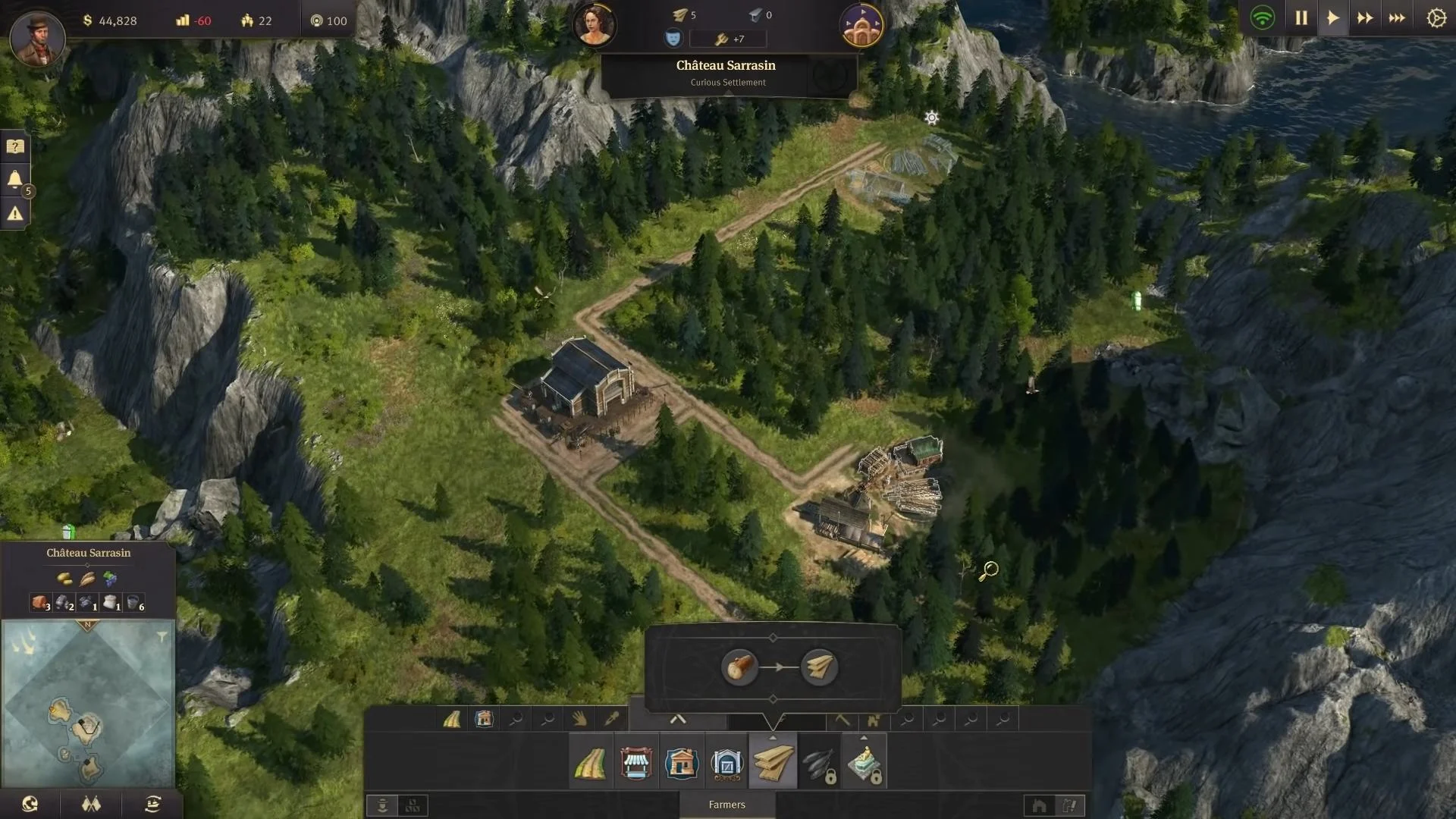
The fundamental rules explained in this section will apply to every production chain in the game. When building any production chain, you want to factor into three things:
- The time it takes to make the item
- The workforce needed to make it
- The load that’s gonna be placed in the Warehouse
Just like houses are connected to a market, Production buildings connect to a Warehouse. Both markets and warehouses then connect back to the Harbor and it never really gets any more complex than that.
To meet the needs of the population we have to get into the production side of the game. As a basic example, houses cost timber to be built so let’s set up this production chain so you can build more.
Time
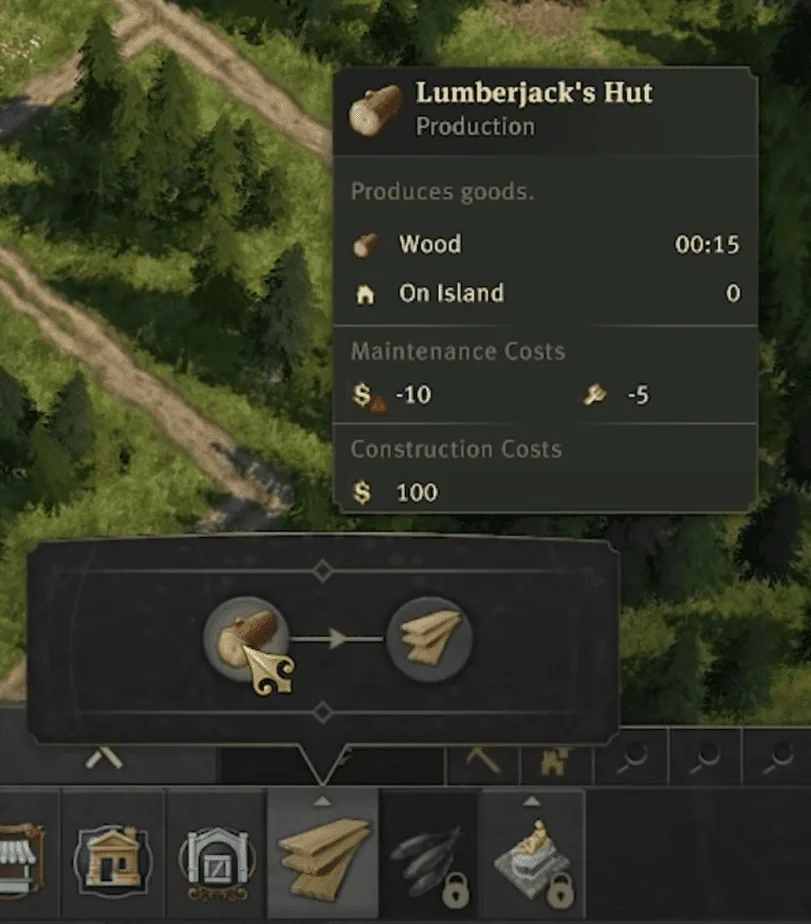
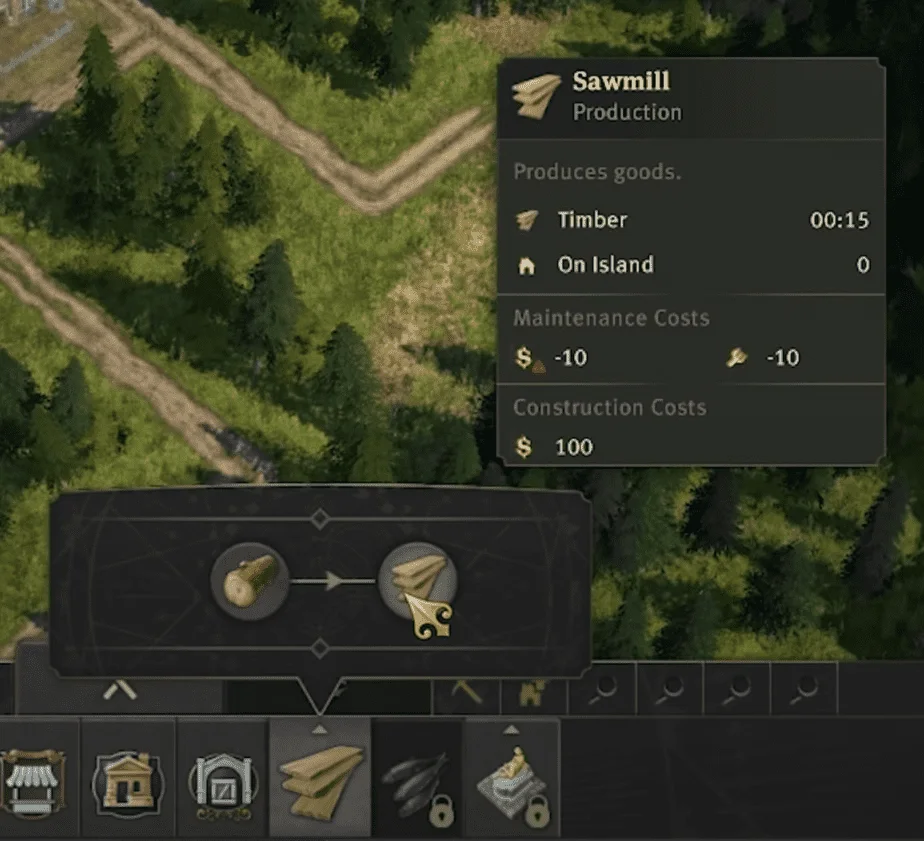
Taking wood/timber as an example and going through our three rules we can see that wood gets refined into timber. Wood takes 15 seconds to produce and timber takes 15 seconds to refine. This means it’s a one-to-one production time ratio. Meaning, for every Lumberjack’s Hut (Wood) you have, you should also have a Sawmill (Timber), if you want to just even out the chain and make it leaner.
If you want to store more raw wood for whatever reason then you will need more Lumberjack Huts than Sawmills.
Workforce


The next thing to consider is the Workforce. From our example, we know that a Lumberjack Hut needs five farmers and a Sawmill needs 10. So to get one timber we need 15 farmers to work the building/production chains at any time.
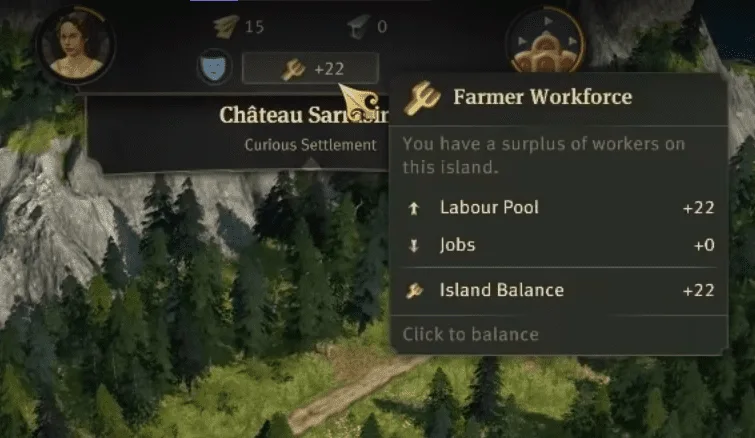
You can see your available workforce at the top of the screen. Using this counter you can predict if you’re going to have enough people to work the production chain or not.
Before you build your buildings (Blueprint Mode again is your friend in this) you can map the production chains out and then just click the construct button to have them upgraded/built when you’re happy and you have the population to do so.
If you do end up overbuilding then you’ll have a shortage of workers and they’ll spread out evenly between the buildings reducing the efficiency of everything and in turn increases the time it takes to produce the items.
Warehouses
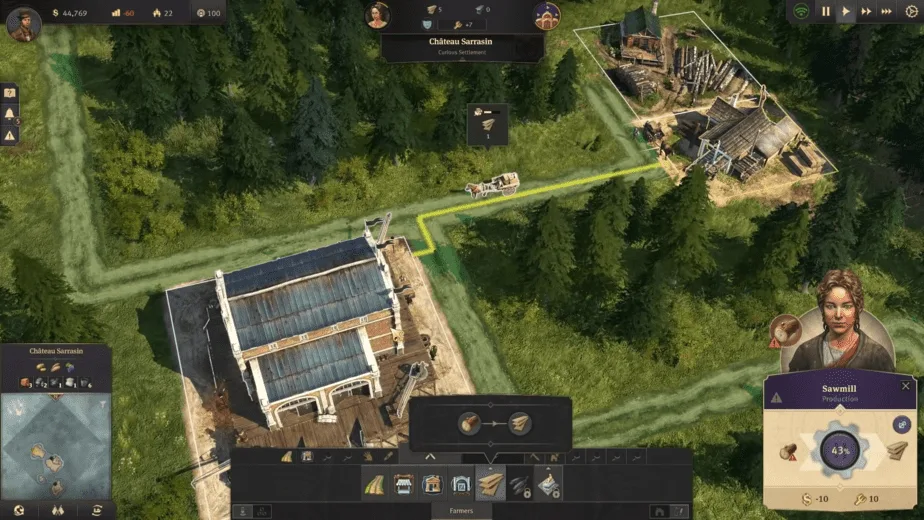
The final thing to consider is the load on the Warehouse. As mentioned before, all production buildings need to be connected to a warehouse and that warehouse needs to be pretty close by or they won’t function.
A Warehouse contains all of your Island’s production/resource storage. It essentially works like a magic chest, they are all linked together and whatever item goes in one can come out of any of the others.
The loading and unloading process at the warehouse takes a bit of time and the warehouse only has a certain number of loading bays. If you have too many production buildings bringing in stuff to one warehouse then it may get backed up with carts waiting to load and unload.
Production Chain
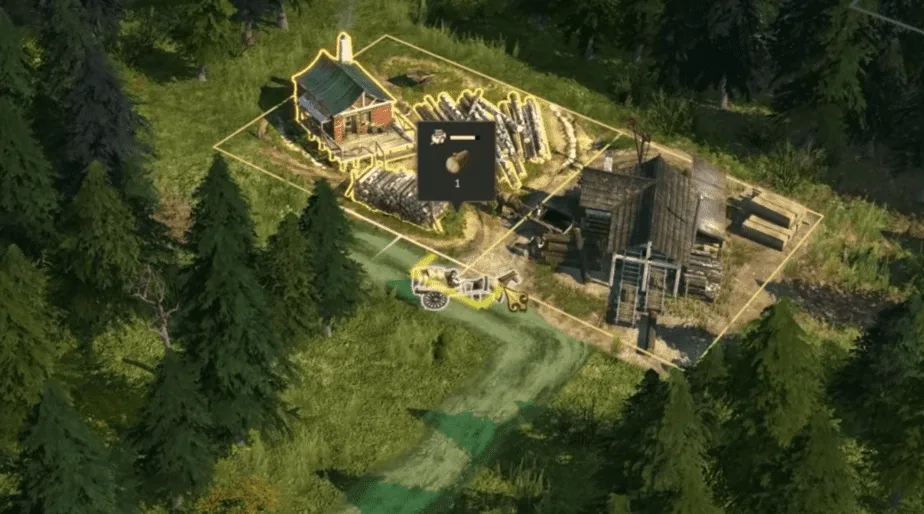
To understand a Production Chain in Anno 1800, we will take the same example of Wood and Timber. A Lumberjack Hut creates one piece of wood every 15 seconds then a little cart will take that wood to the Sawmill where it’ll take 15 seconds to produce one piece of timber then a little cart will take that timber back to the Warehouse to put it in your Island storage.
To cut down on the travel time from the production buildings to the warehouse, having the Sawmill next to the Lumberjack Hut means that the cart will take it right where it needs to go. It won’t go to the warehouse first, so you’re essentially saving on the time it takes to load and unload things and freeing up that slot.

Ideally, you would want to do this kind of production placement as much as possible to avoid taking things to warehouses and just take them straight to the refineries instead. It is not necessary to apply this rule but its beneficial efficiency-wise.
You could have all of your woodcutters in one place and all of your sawmills in another place but that does create a dependency on warehouses to load and unload and the cost of maintaining the warehouses themselves.
You can cut down on all of the unnecessary hassles by trying to bring things directly to where they need to go. This rule or process can then be repeated for most chains at tier-one production.
Other Production Chain Examples
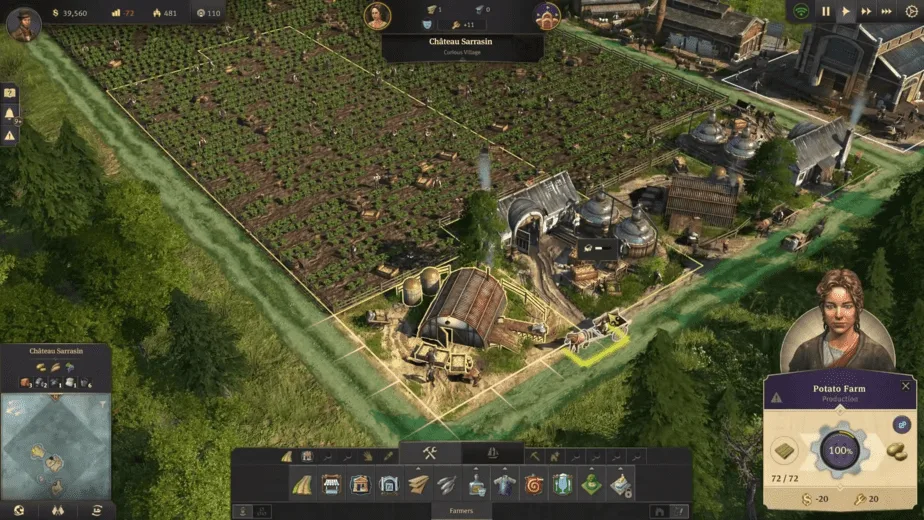
Another Tier 1 example, Potato farms to Schnapps is one-to-one production time so they can easily fit next to each.
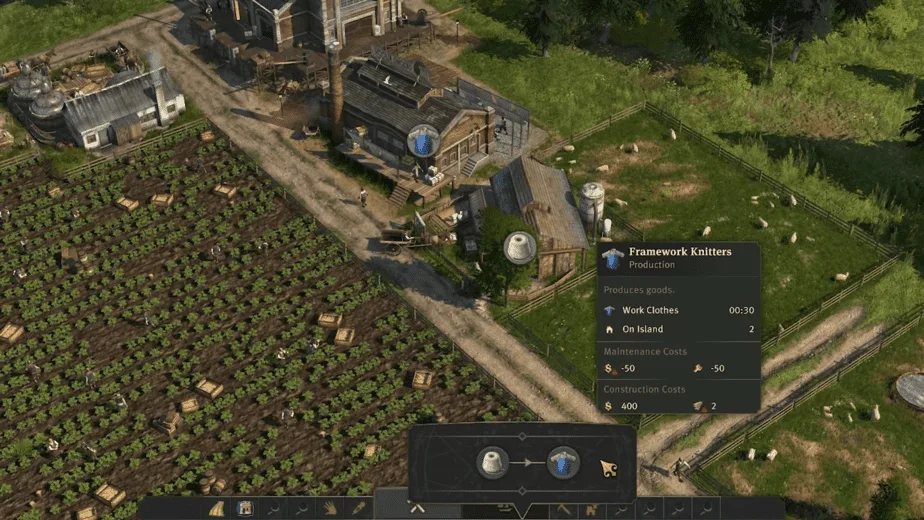
Wool to Clothes is one-to-one so they can go next to each other as well.
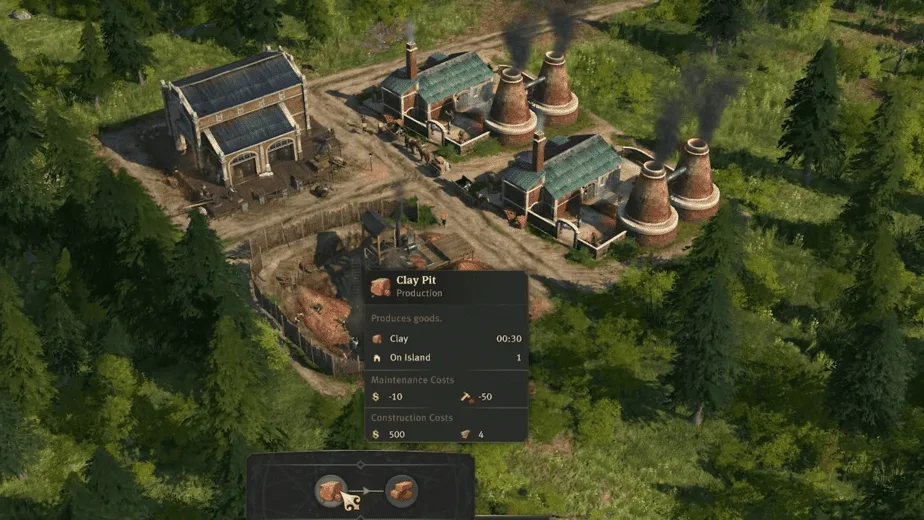
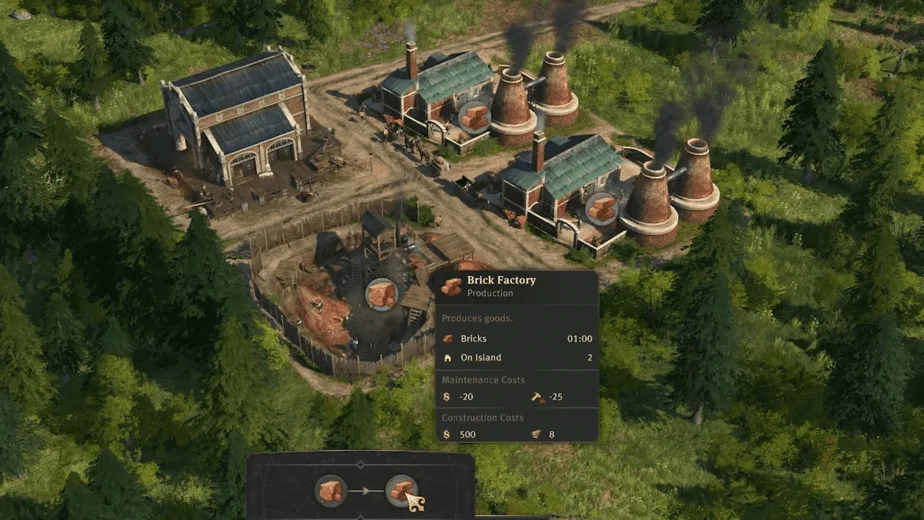
In Anno 1800, when you reach advanced production tiers like Bricks, you can see that a Clay mine to a Brick Factory is two-to-one production time (i.e. Clay takes 30 seconds to produce and Brick gets produced in a minute). This means you can have one clay mine and two brick factories and then they’ll even out.
So just keep in mind to check those production times and work them into each other. Check that you have the workforce. Check that there is enough room for a warehouse nearby that’s not going to be overloaded and you’ll always be good to go.
Production is quite simple in Anno 1800 if you have these basics down. As you progress, there will be more elements like diverse population needs and production time differences to look out for. However, if you have the knowledge to factor in all the rules we have given above, you will be building huge industries in no time.

